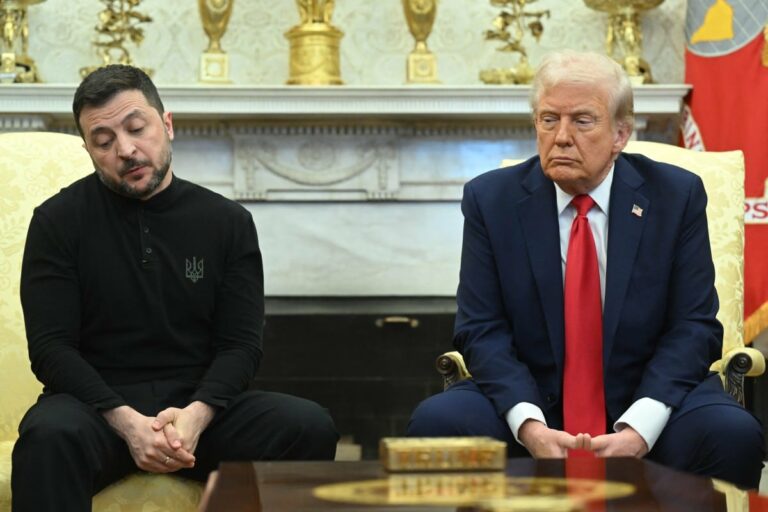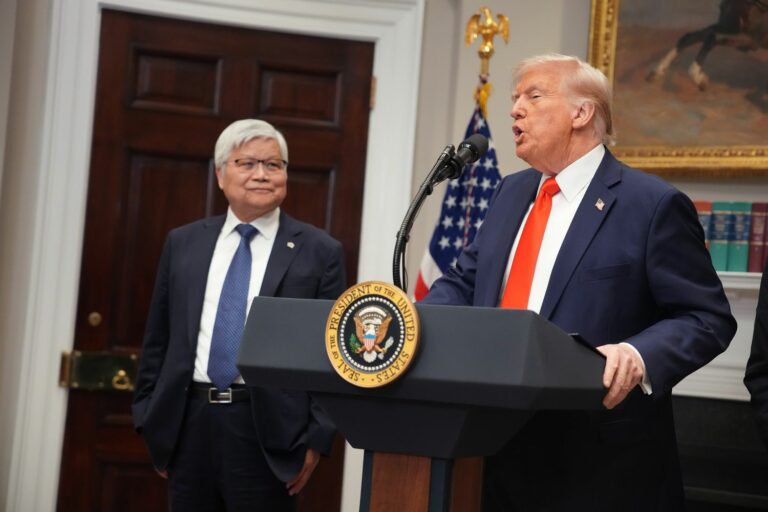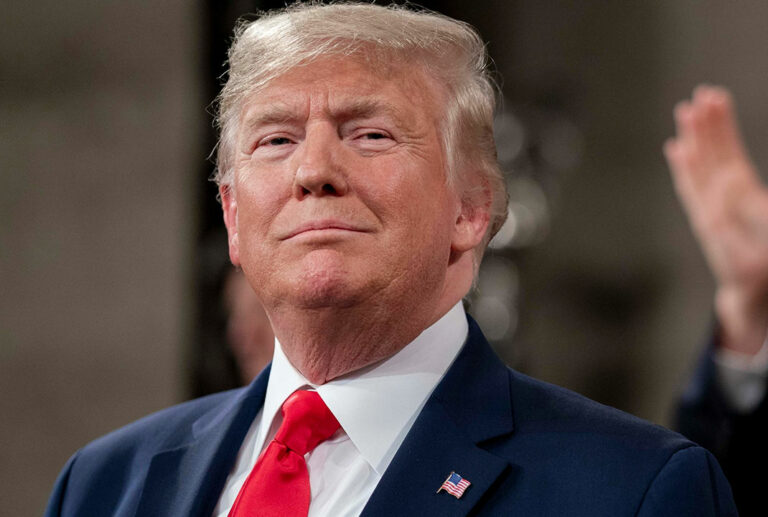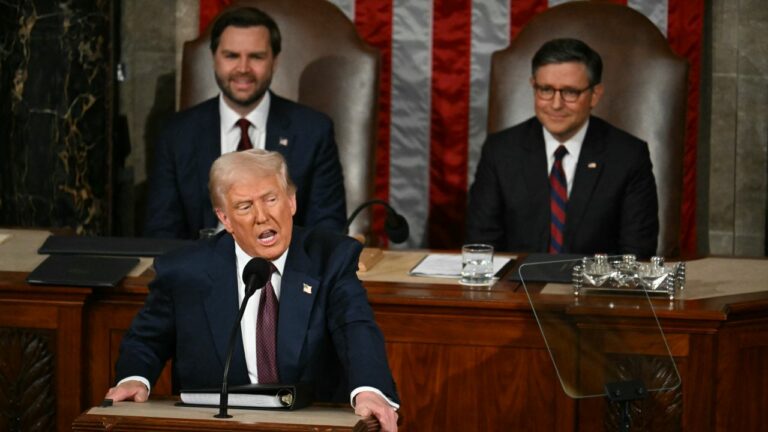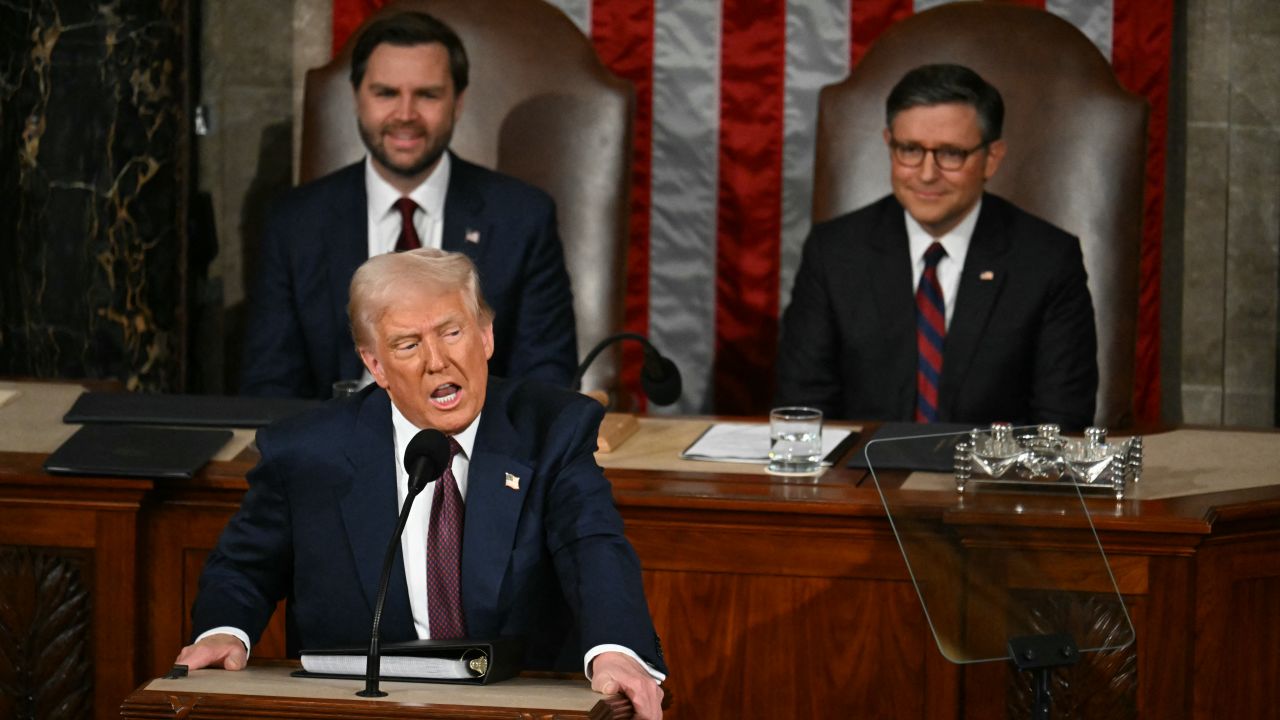
In recent times, the economic landscape of the United States has been a topic of intense discussion and scrutiny. The takeaways from Trump’s address to Congress serve as valuable insights into his economic vision for the nation. In this article, we delve deep into the various facets of Trump’s speech, analyzing tax cuts, tariffs, inflation, social security concerns, and more. Each section will unpack the nuances behind his proposals and their potential impact on the American economy.
Tax Cuts – Redefining the Financial Landscape
Taxation is a crucial aspect of any government’s fiscal policy, and President Trump made bold claims about upcoming tax cuts during his speech. He outlined several proposed eliminations and reductions aimed at providing relief to American citizens.
Eliminating Taxes on Social Security Benefits
One of the most significant aspects of Trump’s proposal was the call for the elimination of taxes on Social Security benefits.
The rationale behind this move is clear: seniors often rely heavily on these benefits for their livelihoods. By removing the tax burden, Trump aims to enhance the financial well-being of older Americans. However, this proposal poses challenges in terms of revenue generation for the government. Social Security funds are critical for maintaining the program’s solvency, and eliminating taxes could negatively impact its long-term viability.
Moreover, there’s a broader discussion around how this plan would affect wealth distribution across different demographics. While it seems beneficial for retirees, the implications for younger generations and overall national debt must also be considered. Balancing short-term relief with long-term sustainability is a difficult task that requires careful examination.
Tax Breaks and Incentives for American-made Products
Another notable suggestion was offering tax breaks on auto loan interest specifically for American-made cars.
This proposal aims to stimulate domestic production and consumption, presenting a win-win scenario for both consumers and businesses. By providing incentives for buying American products, Trump seeks to reinvigorate the manufacturing sector, which has faced numerous challenges over the years. This can potentially create jobs and bolster local economies, aligning with the larger goal of reindustrialization.
However, one must analyze the feasibility of implementing such tax breaks. How much will they cost the government? Will the savings for consumers translate into enough demand to significantly boost the automotive industry? These questions require robust economic modeling to predict potential outcomes accurately.
Broadening the Tax Base
Trump’s call for new tax cuts extends beyond specific sectors. He advocates for a comprehensive approach that revisits current taxation structures, aiming to simplify and broaden the tax base.
Simplifying tax codes could reduce the compliance burden on individuals and businesses alike, ultimately fostering an environment conducive to growth. However, it raises the question of how these changes would affect federal revenue generation and public services funded by tax dollars. Policymakers need to strike a balance between incentivizing growth and ensuring the necessary resources for essential services.
As we reflect on the takeaways from Trump’s address to Congress, his tax proposals reveal a vision rooted in fostering immediate consumer relief while grappling with longer-term economic health.
Tariffs – Protecting American Jobs or Raising Consumer Prices?
One of the most controversial aspects of Trump’s economic strategy has been his implementation of tariffs on trading partners. During his address, he reaffirmed his commitment to this policy, framing it as a measure to protect American jobs and restore the spirit of American industry.
Understanding Tariffs: A Double-Edged Sword
Tariffs impose taxes on imported goods, which can lead to increased prices for consumers if companies raise their product prices to offset costs. While this might protect domestic manufacturers from foreign competition, it also risks alienating consumers who may face higher prices on everyday items.
Trump’s rhetoric emphasized the idea that tariffs could generate trillions in revenue and create unprecedented job opportunities. However, economic experts warn that increased tariffs could lead to retaliatory actions from other countries, further escalating trade tensions and potentially harming American exporters.
Impact on Inflation and Cost of Living
Trump attributed ongoing inflationary pressures to former President Biden’s policies, arguing that his own tariffs would not exacerbate the situation but rather stabilize it. Yet, many economists express concern that tariffs can contribute to price increases, particularly in consumer goods.
For instance, the imposition of 25% tariffs on imports from Canada and Mexico and 20% tariffs on Chinese goods could drive up costs for everything from electronics to food. As households struggle with rising prices, the economic burden may disproportionately affect lower-income families. Analyzing how these tariffs influence supply chains and consumer behavior is essential to understanding their broader ramifications.
Long-Term Considerations of Tariff Policies
While Trump champions tariffs as a means to protect American jobs, the long-term consequences remain a point of contention. There is an argument to be made that protectionist measures can stifle innovation and competitiveness within U.S. industries.
In a globalized market, adaptability and agility are critical for success. Tariffs could inhibit companies from exploring cheaper production methods or innovative technologies, ultimately limiting their growth potential. Policymakers must consider whether preserving jobs in the short term justifies the potential downsides of fostering a less competitive business environment.
From the takeaways from Trump’s address to Congress, it is evident that tariffs form a cornerstone of his economic philosophy, although their efficacy remains debated among stakeholders.
Inflation – Blame Game and Economic Realities
Inflation has become a pressing issue for many Americans, with rising prices affecting household budgets. President Trump did not shy away from addressing this challenge head-on during his address to Congress.
Pointing Fingers: Who is Responsible for Inflation?
In his speech, Trump placed the blame squarely on Joe Biden’s shoulders, arguing that his predecessor’s policies have led to persistent inflationary pressures. This narrative aligns with a broader Republican strategy of framing economic difficulties as failures of the Democratic administration.
However, it’s vital to recognize that inflation is a multifaceted phenomenon influenced by various factors, including supply chain disruptions caused by the pandemic, rising energy prices, and shifts in consumer demand. While political narratives play a role in shaping public perception, understanding the root causes of inflation requires a nuanced analysis that transcends party lines.
Rising Prices: The Cost of Everyday Goods
Trump highlighted specific examples of skyrocketing prices, notably focusing on food items like eggs, which have seen dramatic increases due to supply challenges linked to bird flu outbreaks. His administration’s announcement of a $1 billion campaign to combat bird flu demonstrates a recognition of the urgency of these issues.
Nevertheless, the effectiveness of such initiatives in delivering immediate relief remains uncertain. The truth is that the interplay of various economic forces complicates quick fixes. While Trump proposes solutions, the reality is that inflation requires coordinated action across multiple sectors to truly make a dent.
Energy Policies and Their Role in Inflation
Central to Trump’s economic vision is the push for traditional energy sources, with plans to reverse Biden-era green energy policies. He argues that increasing oil and gas drilling will help lower household costs and alleviate inflationary pressures.
This perspective raises critical questions about sustainability and long-term environmental impacts. Transitioning to renewable energy sources is increasingly seen as essential for future economic resilience. Therefore, while traditional energy policies may yield short-term gains, the broader implications for climate change and resource management need to be carefully balanced.
The takeaways from Trump’s address to Congress provide insight into his strategies to tackle inflation, but the effectiveness of these measures remains to be seen as economic realities unfold.
Social Security Concerns – Myths vs. Reality
Social Security has long been a hot-button issue in American politics, and Trump took the opportunity to address perceived flaws within the system during his address.
Social Security Program and Allegations of Fraud
Trump claimed that his administration had uncovered shocking incompetence and instances of probable fraud within the Social Security program, mentioning absurd claims of beneficiaries being well over 100 years old. While sensational, this narrative was met with skepticism.
Experts quickly debunked these assertions, clarifying that issues related to outdated databases, rather than widespread fraud, account for discrepancies in age records. This illustrates the importance of data accuracy and the need for reform to ensure the integrity of the Social Security program.
Moreover, painting a picture of rampant fraud can distract from the genuine challenges facing Social Security —such as funding shortfalls and demographic shifts that threaten its sustainability—calling for constructive dialogue rather than fear-mongering.
Reforming Social Security for Future Generations
Amid the discussions on fraud, there lies a more pressing issue: reforming Social Security to ensure its viability for future generations. The program faces significant challenges as the population ages and fewer workers support a growing number of retirees.
Sustainable solutions could involve adjustments to benefits, eligibility criteria, or taxation structures. Engaging in honest conversations around these challenges is vital for crafting effective policies that address both current needs and long-term stability.
The Role of Technology in Enhancing Efficiency
With advances in technology, there is a unique opportunity to improve the efficiency of social programs including Social Security. Embracing digital solutions can streamline operations, minimize errors, and enhance customer service for beneficiaries.
Investing in technology to overhaul administrative processes would help mitigate the challenges highlighted by Trump while also saving taxpayer money in the long run. It is essential to allocate resources wisely and focus on solutions that benefit all parties involved.
The takeaways from Trump’s address to Congress spotlight the ongoing debate surrounding Social Security, emphasizing the need for thoughtful policies that transcend sensationalism.
The Future of American Manufacturing – Ships Over CHIPS
Trump’s speech touched upon revitalizing American manufacturing, particularly advocating for the shipbuilding industry while critiquing the CHIPS Act supporting semiconductor manufacturing.
The Push for Domestic Shipbuilding
Recognizing the strategic significance of shipbuilding for national defense and economic autonomy, Trump called for establishing an office dedicated to promoting domestic ship construction.
By incentivizing shipbuilders through tax breaks and focused policies, he aims to rejuvenate an industry that has seen a decline in recent decades. This approach aligns with the broader theme of prioritizing American interests and enhancing job creation within the country.
However, the realities of competing with established shipbuilding nations like China present formidable challenges. Significant investment in infrastructure, workforce training, and innovation will be necessary to reclaim a leading position in shipbuilding.
Reevaluating the CHIPS Act
In contrast, Trump criticized Biden’s $52 billion CHIPS Act, which aims to promote semiconductor manufacturing in the U.S. The CHIPS Act is designed to address vulnerabilities exposed by supply chain disruptions during the pandemic and reduce reliance on foreign technology.
While Trump seeks to redirect attention towards traditional manufacturing, the advancement of semiconductor technology is vital for numerous industries, including automotive, healthcare, and telecommunications. Abandoning efforts to support semiconductor manufacturing could hinder America’s competitiveness on the global stage.
The Dual Need for Innovation and Traditional Manufacturing
A balanced approach to American manufacturing should embrace both traditional industries like shipbuilding and emerging sectors like semiconductors. Rather than pitting them against each other, a comprehensive strategy that recognizes the value of both realms is essential.
Investing in education, research, and development can bolster innovation while preserving foundational industries. By adopting a holistic view of manufacturing, policymakers can foster sustainable growth that benefits various sectors of the economy.
The takeaways from Trump’s address to Congress suggest a desire to prioritize American manufacturing, but the complexities of navigating modern industries require careful consideration and collaboration.
